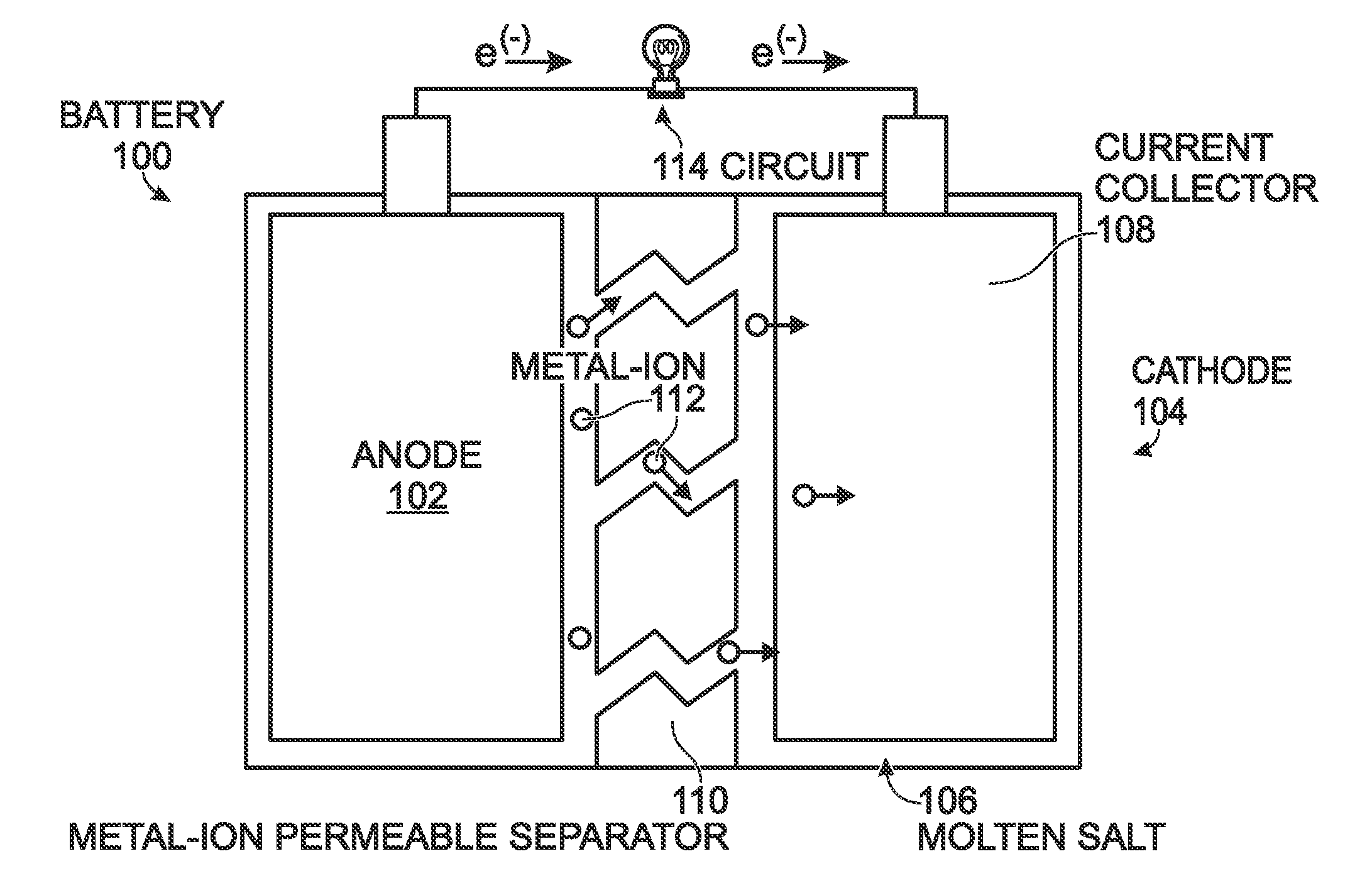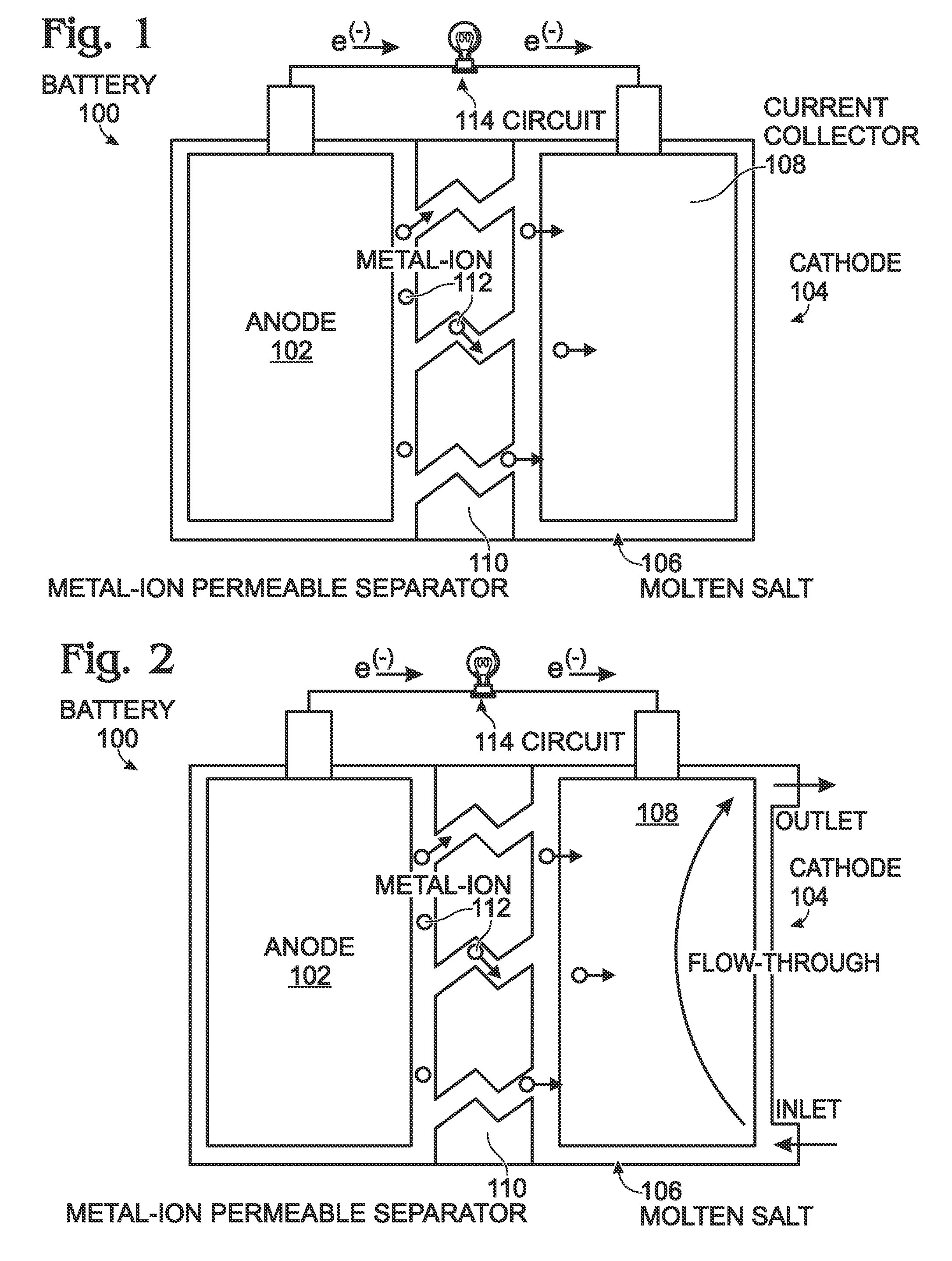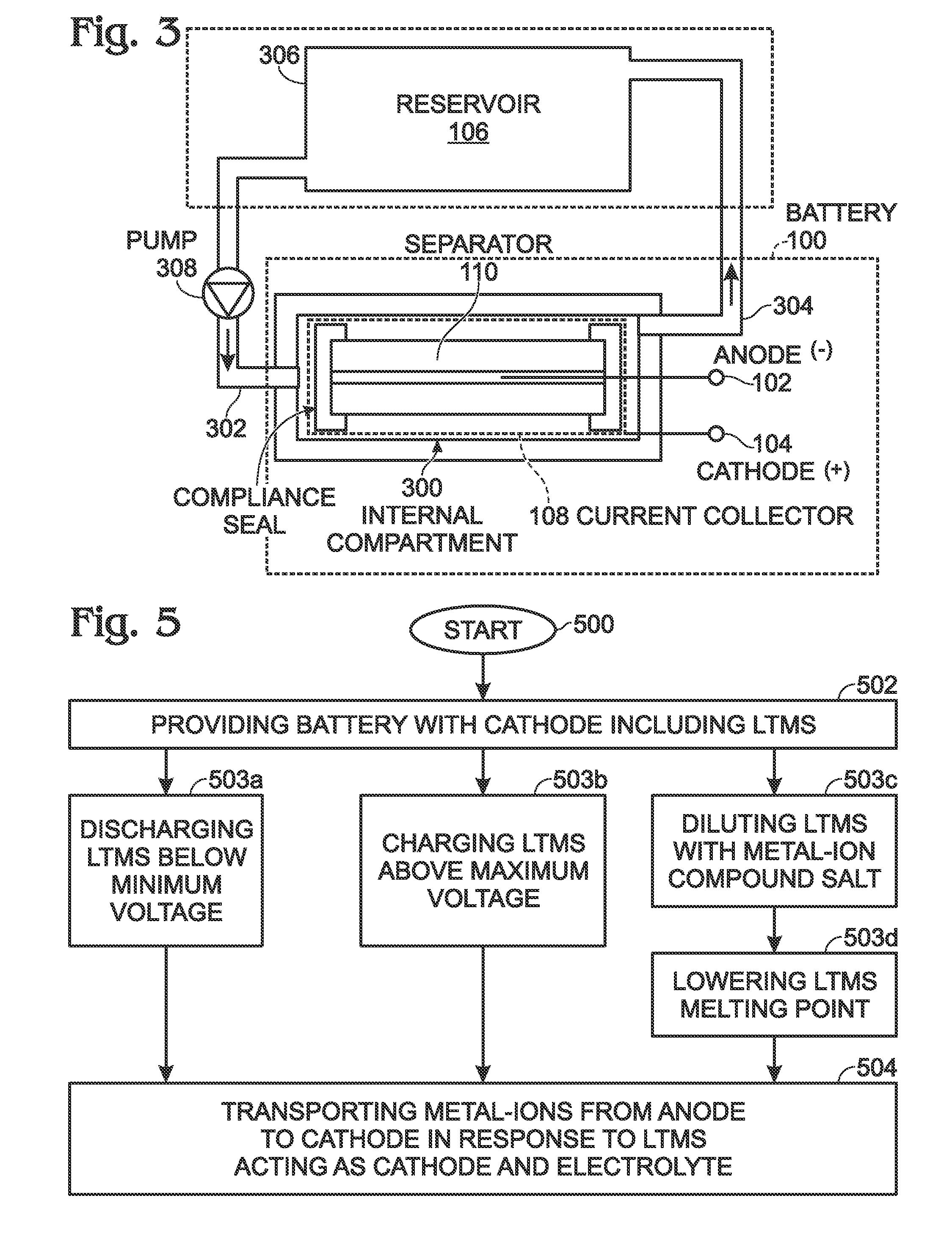Battery with Low Temperature Molten Salt (LTMS) Cathode
a battery and molten salt technology, applied in the field of electrochemical cells, can solve the problems of limiting the cycle life and deteriorating the stability of materials, and achieve the effect of low melting points
- Summary
- Abstract
- Description
- Claims
- Application Information
AI Technical Summary
Benefits of technology
Problems solved by technology
Method used
Image
Examples
Embodiment Construction
[0020]FIG. 1 is a schematic block diagram of a battery with a low temperature molten salt (LTMS) cathode. The battery 100 comprises an anode 102 configured to accept and release metal-ions. A cathode 104 is formed from a LTMS 106 having a liquid phase at a temperature of less than 150° C. A current collector 108 is submerged in the LTMS 106. A metal-ion permeable separator 110 is interposed between the LTMS 106 and the anode 102. The LTMS 106 is, simultaneously with being included with the cathode 104, an electrolyte transporting metal-ions 112 from the separator 110 to the current collector 108. The LTMS 106 comprises a redox couple, including a reducing agent and its corresponding oxidizing agent.
[0021]Some examples of LTMSs include Mn(NO3)3.6H2O, Mn(NO3)2.4H2O, MnCl2.4H2O, FeBr3.6H2O, KFe(SO4)2.12H2O, FeCl3.6H2O, Fe(NO3)3.9H2O, FeCl3.2H2O, Fe(NO3)2.6H2O, FeSO4.7H2O, CoSO4.7H2O, Co(NO3)2.6H2), Ni(NO3)2.6H2O, Cd(NO3)2.4H2O, and Cd(NO3)2.H2O. However, this is not an exhaustive list ...
PUM
| Property | Measurement | Unit |
|---|---|---|
| temperature | aaaaa | aaaaa |
| operating voltage | aaaaa | aaaaa |
| temperature | aaaaa | aaaaa |
Abstract
Description
Claims
Application Information
 Login to View More
Login to View More - R&D
- Intellectual Property
- Life Sciences
- Materials
- Tech Scout
- Unparalleled Data Quality
- Higher Quality Content
- 60% Fewer Hallucinations
Browse by: Latest US Patents, China's latest patents, Technical Efficacy Thesaurus, Application Domain, Technology Topic, Popular Technical Reports.
© 2025 PatSnap. All rights reserved.Legal|Privacy policy|Modern Slavery Act Transparency Statement|Sitemap|About US| Contact US: help@patsnap.com



